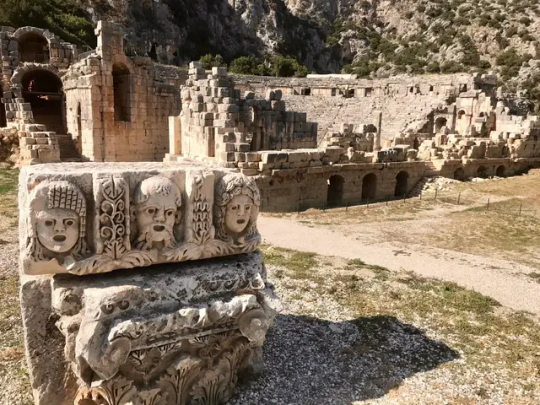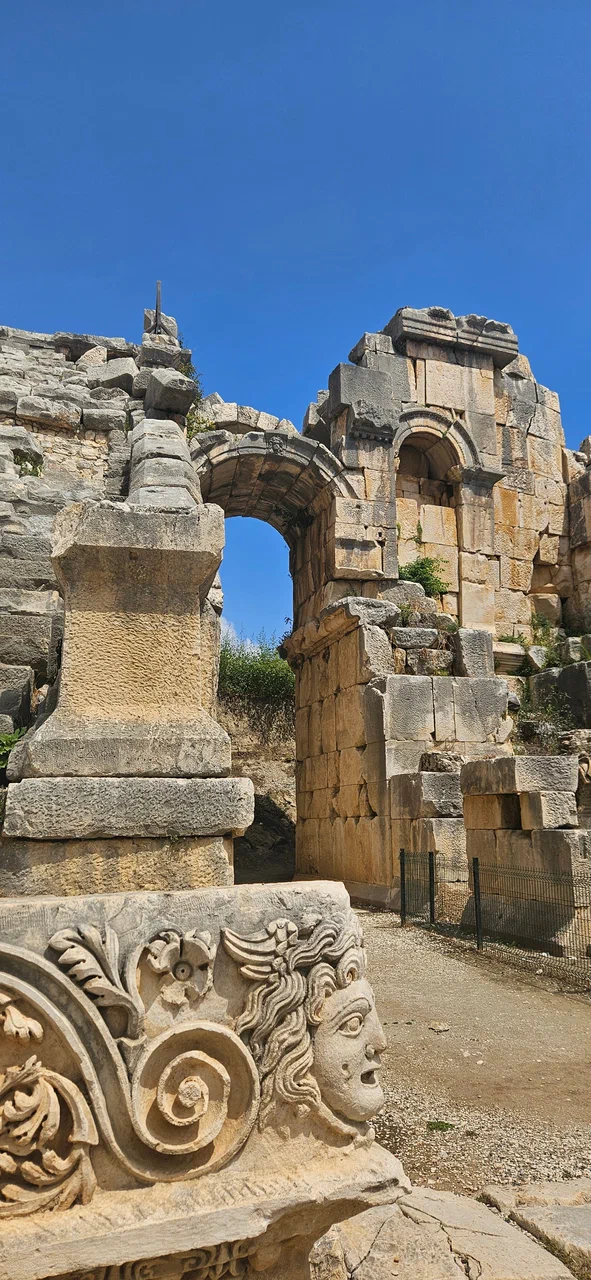#скальные захоронения
Explore tagged Tumblr posts
Text


















Руины древнего города Миры
Остатки древнего ликийского города Миры лежат на расстоянии около 3 км от турецкого Демре. Город был основан в IV веке до н. э. и уже в III веке до н. э. он стал значимым культурным и религиозным центром Ликии. Большое влияние и силу город сохранял на протяжении не одного века, но случившееся в VII в. н. э. наводнение кардинально это изменило. Мира потерял выход к морю и оставался религиозным центром.
Сегодня от самого города Миры осталось не так много, но на территории функционирует музей под открытым небом, в котором все еще можно увидеть ряд достопримечательностей из древности. Лучше всего сохранились амфитеатр, акрополь и саркофаги.
Ликийская культура уникальна еще и своими скальными захоронениями – здешние гробницы и саркофаги в скальных массивах считаются наиболее хорошо сохранившимися до наших дней. Вопреки тому, что надписи, уцелевшие на стенах гробниц города мертвых, в хорошем состоянии и вполне читабельны, многие из них до сих пор не были расшифрованы.
В вопросах захоронений у ликийцев была своя довольно интересная система. Согласно их культуре и мировоззрению, умерший должен быть захоронен как можно ближе к солнцу.
Рядом с гробницами раскинулось еще одно значимое и интересное сооружение – масштабный греко-римский амфитеатр, который был воздвигнут в IV в н. э. Строение поражает своими масштабами – рассчитано оно на 10 тысяч зрителей. Здесь проходили гладиаторские бои, выступали императоры и проповедовали христианские святые. По сей день в амфитеатре сохранилась великолепная акустика.
Ruins of the ancient city of Mira
The remains of the ancient Lycian city of Mira lie at a distance of about 3 km from Turkish Demre. The city was founded in the IV century BC and already in the III century BC it became a significant cultural and religious center of Lycia. The city retained great influence and strength for more than one century, but the flood that occurred in the 7th century A.D. radically changed this. Mira lost access to the sea and remained a religious center.
Today, there is not much left of the city of Mira itself, but there is an open-air museum on the territory, where you can still see a number of sights from antiquity. The amphitheater, acropolis and sarcophagi are the best preserved.
The Lycian culture is also unique for its rock burials – the local tombs and sarcophagi in the rock massifs are considered the best preserved to this day. Despite the fact that the inscriptions that have survived on the walls of the tombs of the city of the dead are in good condition and quite readable, many of them have not yet been deciphered.
The Lycians had their own rather interesting system of burial. According to their culture and worldview, the deceased should be buried as close to the sun as possible.
Next to the tombs there is another significant and interesting structure – a large-scale Greco–Roman amphitheater, which was erected in the IV century A.D. The structure impresses with its scale - it is designed for 10 thousand spectators. Gladiatorial fights took place here, emperors performed and Christian saints preached. To this day, the amphitheater retains excellent acoustics.
Источник: //www.sputnik8.com/ru/antalya/activities/42587-demre-mira-kekova-zatonuvshiy-gorod-i-drevnie-zahoroneniya, //yandex.ru/maps/org/drevniy_gorod_mira/21916048238/gallery/?ll=29.997475%2C36.256927&photos%5Bbusiness%5D=21916048238&z=15, //kidpassage.com/activity/turkey/kemer/demre-drevniy-gorod-mira, /experience.tripster.ru/experience/Antalya/36638-drevnij-gorod-mira/.
#Türkiye#history#antiquity#Myra#Lycian culture#archeology#architecture#ruins#acropolis#amphitheatre#tombs#rock burials#nature#mountains and forest#sky#Турция#античность#Мира#археология#руины#ликийская культура#архитектура#акрополь#амфитеатр#гробницы#скальные захоронения#природа#горы и лес#небо
109 notes
·
View notes